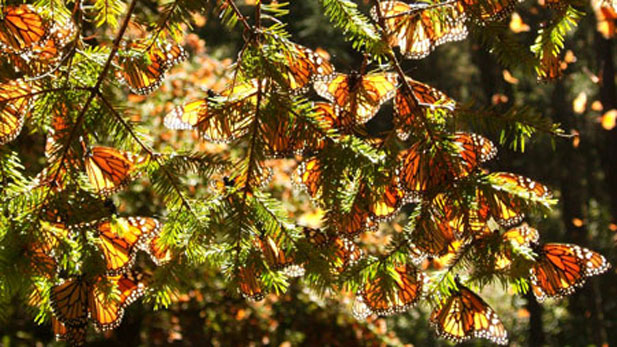
Every year, 100 million Monarch butterflies set off on an incredible journey across North America.
These beautiful creatures fly 2,000 miles to reach their remote destination: a tiny area high in the mountains of Mexico. Yet scientists are still puzzling over how the butterflies achieve this tremendous feat of endurance — and how, year after year, the Monarchs navigate with such hair’s-breadth precision.
NOVA flies along with the Monarchs, visiting the spectacular locations they call home and meeting the dangers they encounter along the way. As this program reveals, the Monarch is a scientific marvel locked in an inspiring struggle for survival.
The film opens with caterpillars munching milkweed in southern Canada in late summer. Soon each caterpillar transforms itself into a silky chrysalis; and about ten days later, a delicate four-winged monarch emerges.
Then, at some unknown signal, the monarchs take to the air on a two-month, 2,000-mile flight over fields, forests, cities, plains, open water, deserts, and finally mountains to congregate in a tiny, high-altitude region of central Mexico where they’ve never been before. Incredibly, they arrive by the millions at the same time each year.

In the Mexican state of Michoacán, NOVA joins mountain villagers as they celebrate the arrival of the monarchs in the first week of November. The butterflies’ arrival marks the start of a celebration called the Day of the Dead, since the local people have traditionally associated the monarchs with the returning souls of their departed ancestors.
Unfortunately, illegal logging in the Mexican butterfly sanctuaries threatens the unique habitat that monarchs depend on for their survival. Monarchs may not yet be an endangered species, but their annual migration is an endangered phenomenon that could dwindle to insignificance if the giant firs that they cling to during the winter disappear.
See previews and find out more at pbs.org.

By submitting your comments, you hereby give AZPM the right to post your comments and potentially use them in any other form of media operated by this institution.